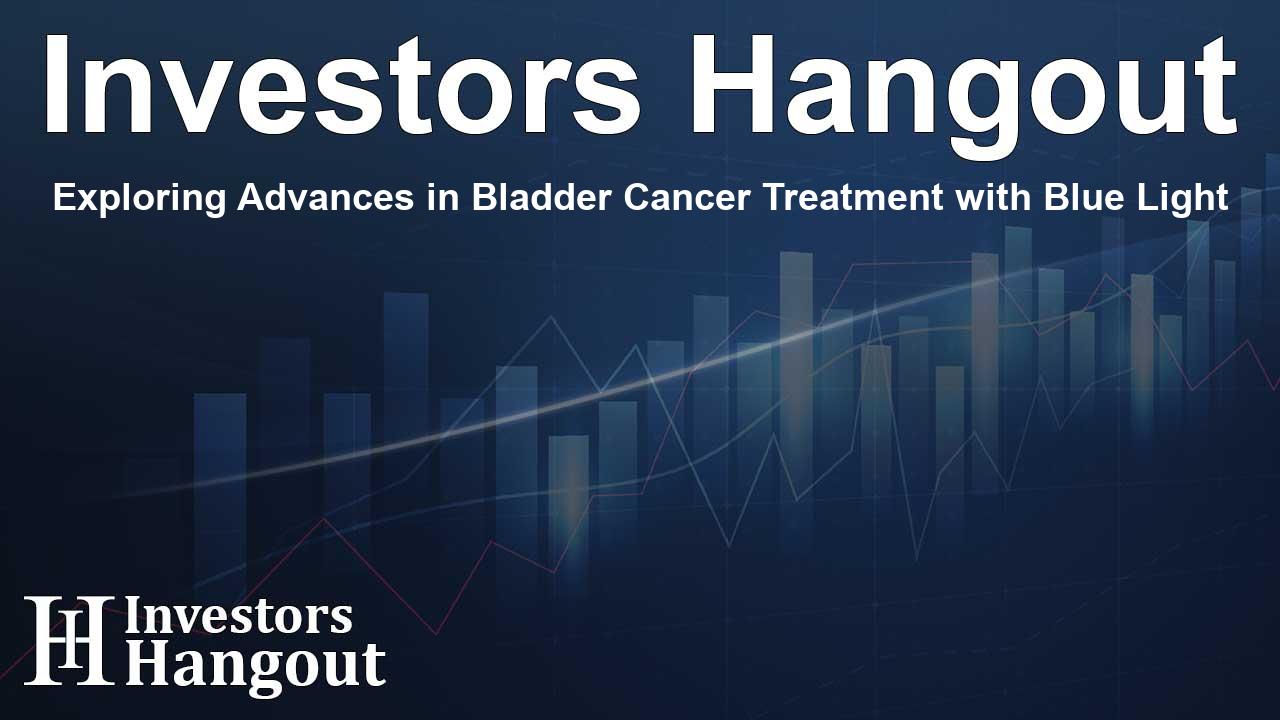Exploring Advances in Bladder Cancer Treatment with Blue Light

Recent Innovations in Bladder Cancer Diagnosis
Photocure ASA, known as the Bladder Cancer Company, recently presented groundbreaking findings at the American Society of Clinical Oncology Genitourinary Cancers Symposium (ASCO-GU) concerning the implications of Blue Light Cystoscopy in non-muscle invasive bladder cancer (NMIBC). This presentation revealed important data regarding tumor detection and patient management that may significantly influence future treatments.
Study Overview and Key Findings
During the symposium, a study highlighted that 201 out of 2,854 NMIBC patients showed malignant lesions uniquely identified through Blue Light Cystoscopy, despite having had negative results from standard white light cystoscopy. This groundbreaking data can lead to essential changes in how bladder cancer is treated.
The study's findings demonstrate that Blue Light Cystoscopy employs Cysview to improve tumor visualization, thereby enhancing carcinoma detection and facilitating more accurate patient risk assessments. The upstaging rate of tumors was recorded at 9.3%, showing that this method can lead to optimized patient management strategies, particularly concerning intravesical therapy and potential surgical interventions.
Understanding Bladder Cancer Incidence
Globally, bladder cancer is a major health concern, ranking as the eighth most common type of cancer, with an estimated 1,949,000 prevalent cases. The disease poses a high recurrence rate, necessitating frequent monitorings, such as cystoscopies. With approximately 75% of workers' male populations affected, it’s crucial to have effective diagnostic tools, like Blue Light Cystoscopy, to address these challenges.
Improving Patient Management Through Enhanced Detection
The study emphasized that timely detection of tumors impacts clinical decisions significantly. By utilizing Blue Light Cystoscopy, urologic teams can make better-informed treatment decisions, reducing the likelihood of treatment failures. Improved detection leads to fewer residual tumors and potentially better long-term outcomes for patients suffering from NMIBC.
The findings suggest that there is an urgent necessity for enhanced detection methods in bladder cancer diagnosis. The positive outcomes stemming from the Blue Light Cystoscopy registry could pave the way for further research aimed at optimizing treatment protocols for bladder cancer patients.
The Role of Cysview in Early Cancer Detection
Cysview's technology plays a critical role during Blue Light Cystoscopy, as it highlights cancer cells, making them visibly distinct during the diagnostic process. This specificity allows healthcare providers to identify tumors that traditional methods might miss, resulting in more thorough examinations and timely interventions for bladder cancer patients.
Looking Ahead: The Future of Bladder Cancer Treatment
Photocure continues to lead innovative advances in bladder cancer management. Their commitment to improving patient outcomes aligns with ongoing research efforts to broaden the applications of Blue Light Cystoscopy. Future studies will delve deeper into how these enhancements can refine diagnostics and inform treatment strategies.
As part of its dedication to groundbreaking research, Photocure actively works to accumulate real-world data from its comprehensive bladder cancer patient registry. This effort not only supports continuous improvement in bladder cancer management but also provides a foundational knowledge base for the medical community.
About Photocure ASA
Headquartered in Oslo, Norway, Photocure is at the forefront of bladder cancer innovation. Their commitment to delivering superior diagnostic and therapeutic solutions has resulted in better health outcomes for patients. By utilizing cutting-edge technology, they aim to redefine healthcare solutions in this area.
Frequently Asked Questions
What is Blue Light Cystoscopy?
Blue Light Cystoscopy is a diagnostic procedure that enhances the visibility of bladder tumors by using a special dye called Cysview. It allows for improved detection compared to traditional methods.
Why is early detection important in bladder cancer?
Early detection is crucial in bladder cancer as it can lead to timely and appropriate treatment decisions, potentially reducing the risk of recurrence and improving overall patient outcomes.
How does Blue Light Cystoscopy differ from traditional cystoscopy?
Unlike traditional cystoscopy, which uses white light, Blue Light Cystoscopy makes use of a fluorescent agent that highlights cancerous cells, thus improving detection rates.
What were the findings of the Photocure study presented at ASCO-GU?
The study indicated that Blue Light Cystoscopy detected malignant lesions in 7% of patients who had negative results from standard cystoscopy, leading to more accurate tumor staging.
What is the significance of Cysview in bladder cancer diagnosis?
Cysview enhances the visualization of tumors during Blue Light Cystoscopy, enabling healthcare professionals to identify tumors more effectively and make informed treatment decisions.
About The Author
Contact Addison Perry privately here. Or send an email with ATTN: Addison Perry as the subject to contact@investorshangout.com.
About Investors Hangout
Investors Hangout is a leading online stock forum for financial discussion and learning, offering a wide range of free tools and resources. It draws in traders of all levels, who exchange market knowledge, investigate trading tactics, and keep an eye on industry developments in real time. Featuring financial articles, stock message boards, quotes, charts, company profiles, and live news updates. Through cooperative learning and a wealth of informational resources, it helps users from novices creating their first portfolios to experts honing their techniques. Join Investors Hangout today: https://investorshangout.com/
The content of this article is based on factual, publicly available information and does not represent legal, financial, or investment advice. Investors Hangout does not offer financial advice, and the author is not a licensed financial advisor. Consult a qualified advisor before making any financial or investment decisions based on this article. This article should not be considered advice to purchase, sell, or hold any securities or other investments. If any of the material provided here is inaccurate, please contact us for corrections.
